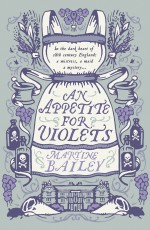To celebrate this month’s paperback publication of AN APPETITE FOR VIOLETS, today I’m interviewing Martine Bailey about her delicious debut novel.
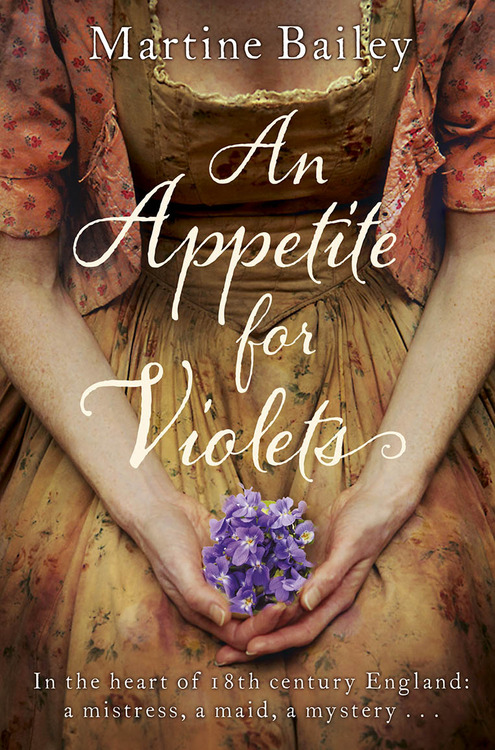
[1] ‘An Appetite for Violets’ is such an intriguing and beautiful title. Can you explain how you came up with it and what it signifies in terms of the novel’sthemes?
The idea for the title began with the discovery of a recipe for Violet Pastilles in an old recipe book. It seemed such an old-fashioned and rather decadent flavour fashion, ideally representing Biddy’s secretive mistress, Lady Carinna and her addiction to sugar and fashion. Floral flavours were very fashionable in all sorts of confectionary at the time, so when Biddy makes ice creams using jasmine and honeysuckle she was absolutely on trend!
When Hodder were considering titles, I realised that violets also featured on Carinna’s violet-spangled dress that Biddy calls ‘a Parisian picture of a gown.’ (Spangles were little pieces of glass that sparkled in the candlelight, before sequins were invented).
Then in the final scenes the scent of violets returns, and when Biddy smells them she recalls a significant moment when she first met Carinna, and understands the scent’s other, more disturbing significance. I chose violets to symbolise the final twist in the novel, because there is something about the scent and flavour that many people find slightly sickly and unsettling:
‘There is something of burned blackened sugar, of overcooked sweetness in their pulsing fragrance.’
So the taste and flavour of violets is something corrupt, that the reader finally understands lies at the heart of the mystery.
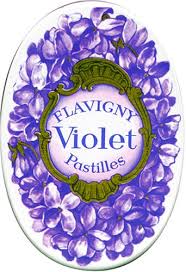
[2] The idea of the recipes at the beginning of some chapters is such an interesting one. Could you explore the reasons why you chose to use that as a narrative framing device? How important are these recipes to the atmosphere of the novel?
The recipes were the starting point of the book, from when I first saw them in the kitchen of a National Trust property, Erddig Hall, near Chester. I picked up a few hand-written recipes for dishes such as venison pasty and plum pudding, and felt they brought the past vividly to life. I wondered how a young servant who worked there might react if she was taken from that tranquil setting to cook and learn about different foods in foreign countries and eventually be forced to use her talents to survive.
What especially fascinated me was the rambling, poetic language of those early recipes, before methods and instructions had become codified as they are now. Many of them are highly individual and personalised – such as ‘Mary Jones, Her Best Way,’ and of course lack all temperatures and instructions, just stating ‘till enough’ or ‘to your taste’.
With no recipe illustrations, there are occasionally Biblical references, such as ‘heap like the Shew Bread in the Bible’ or commonplace references such as, ‘use as much butter as will cover a penny’. One of my favourite instructions is to use prayers to time a process: ‘boil for one Hail Mary’, meaning 15 -20 seconds.
I especially love recipes that guided women through different rites of passage in their lives. Old recipes tell us there were hot drinks or caudles to help give birth, sweet and spicy goods for festivals, bride cakes for marriage and funeral cakes at the end of life – and a lot of other regional specialties in between. I especially find it poignant that recipes are often the only surviving marks on paper left by unvoiced women. So I wanted to convey the way recipes transmitted women’s pleasures down the generations, passing on moments of happiness in hard-won lettering and precious ink.
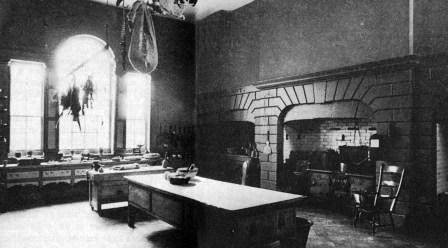
[3] Could you share with us some of the cookery research you did in preparation for writing about an C18th cook?
As soon as I knew what I wanted to write about I applied to learn about Georgian cookery with TV food historian Ivan Day. It was thrilling to learn how to cook on an open fire with a jack that turns the spit, to make wafers with irons in the fire, stitch lard into meat with a larding needle, boil a pudding in a cloth, and many other things I’d read about but didn’t understand. It was also the quince season, so as well as making dishes like quince and marrow tart I discovered the recipes for Taffety Tart in his wonderful collection of old recipe books.
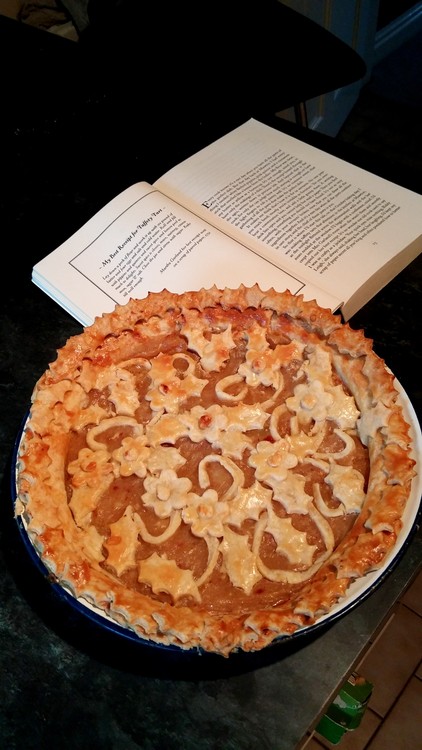
Last year I went back to Ivan’s farm in Cumbria and learned more about sugarwork, using forgotten techniques and attempting the amazing sugarwork skills that confectioners developed in the 18th century, when sugar temples and gardens were created as grand table decorations. I am especially interested in the history of gingerbread as it features in The Penny Heart; it intrigued me to find it was made in all sorts of fancy shapes such as carriages and ‘husbands and wives’ in special moulds, and really was gilded with gold leaf. In my researches not everything has worked – I tried to make boiled wheat furmenty at home and however long I cooked it, it was still as hard as pebbles!
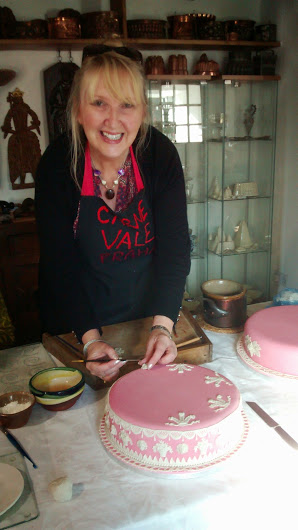
I also did some 18th century re-enactment, dressing up in an extremely unflattering corset, bum-roll and big skirts (though I did learn that the stiff corsets work like a back support for a working woman). Re-enactment helped me understand day to day activities like making fire with a tinderbox, writing with a quill feather, gutting and plucking poultry and just how smoky and hot cooking over a fire can be.
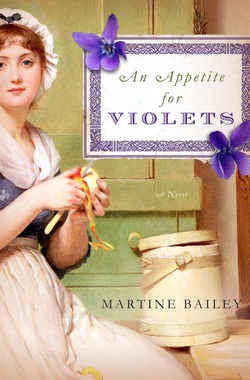
In fact at first it was even more fragmented. I had the idea of a sort of metafiction, a series of texts related to a journey – inventories, accounts, recipes, snatches of journals, and letters. I would have liked maps, too, and clues buried in them – so fairly ambitious! My idea was to weave a narrative through them, based on those early epistolary novels such as Richardson’s Clarissa. I also loved the idea of the Household books given to wealthy women when they first married, and written in different handwriting by mothers, servants, friends, like scrapbooks of prayers, dowry lists, remedies, recipes, household instructions and accounts.
I had to rein in that idea to get a strong narrative moving, and when I found an agent and publisher it naturally became more conventional as it moved towards publication. But there are still traces of the early attempt, for example in Biddy’s list of possessions and of course the recipes and changes of narrator. I think a journey lends itself to multiple viewpoints, and of course it was an opportunity to bury clues in the text so that no single character could be aware of the entire story.
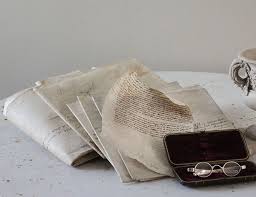
[5] Your next book, The Penny Heart, is coming up in May 2015. Can you tell us a little about your exciting new novel to whet our appetites?
The Penny Heart is the narrative of two women with hugely different backgrounds and sensibilities. Much of it is written in alternating viewpoints, firstly by Grace, a sensitive and artistic young wife who finds herself at isolated Delafosse Hall, horribly attracted to her indifferent and selfish husband, Michael. The alternate strand follows Peg, her housekeeper, a clever cook and – the reader realises – a talented confidence trickster. When Grace finds The Penny Heart, an old penny engraved to commemorate a departing convict, it represents the collision point between the two women, proof of Peg’s past-life as a Botany Bay convict and also a darker secret.
Like Grace, I love the Gothic novels of Ann Radcliffe, so I did enjoy exploring the Gothic tropes of a mouldering, isolated Hall, a sinister servant, an underground tunnel and the legend of a ghost. I also wanted to recreate the uneasy 1790s, when the French, American and Industrial Revolutions were threatening the stability of the English class system. Propertied but legally powerless women such as Grace were vulnerable to the material greed of their partners. Working class criminals broke the law to take what they could of Britain’s fabulous new wealth. As an ‘out and out fly-girl’, Peg takes an oath to follow what was called The Life – learning the secret canting language of rogues and wearing secret tattoos as part of a vibrant Georgian underclass.
I’m not sure if I can whet your actual appetite, because it explores the darker aspects of food – starvation, adulteration, and poison! A fascinating aspect of the era is the world of secret ‘remedies’ and elixirs peddled by criminal quacks and charlatans. This potential danger surrounding food within the home led me to write Grace’s opening warning:
‘I fancy you think little of who makes the food you eat. Thrice a day it appears; you ingest it with more or less pleasure. Do you honestly know whose fingers touched it? Do you give a moment’s attention to the mind that devised your dish, its method and ingredients?’
As I was living in New Zealand when I began the book, the research took me to locations such as Sydney Cove and the wilder shores of New Zealand. Though there are some fine puddings and pies in the novel, I did eat some delicious food at a Maori Hangi, as well as kangaroo, crocodile, paua (black sea snails), campfire damper and grubs!

Martine Bailey’s first historical novel, An Appetite for Violets, is a gastronomic mystery tale set in 18th century Europe. Written as a book of recipes, it takes a young cook on a murderous trip from England to Italy. She lives in Chester, England and her second historical novel, The Penny Heart, will be published in May 2015.
Find out more about Martine Bailey:
https://twitter.com/MartineBailey
https://www.facebook.com/MartineBaileyWriter
Thanks so much to Martine for such detailed and informative answers! It’s obvious how much hard work and dedication has been put into everything Martine does, yet the novel wears this extraordinary research lightly; the compelling narrative is never lost within historical detail and therefore keeps you turning the pages to the very end. It’s such a wonderful book, full of intrigue and mystery, I highly recommend a read. I’m hungry now, so off to stuff my face with Taffety Tart…
